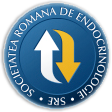
- Login
- Register
- Home/Current Issue
- About the journal
- Editorial board
- Online submission
- Instructions for authors
- Subscriptions
- Foundation Acta Endocrinologica
- Archive
- Contact
 Romanian Academy
Romanian Academy
 The Publishing House of the Romanian Academy
The Publishing House of the Romanian Academy

ACTA ENDOCRINOLOGICA (BUC)
The International Journal of Romanian Society of Endocrinology / Registered in 1938in Web of Science Master Journal List
Acta Endocrinologica(Bucharest) is live in PubMed Central
Journal Impact Factor - click here.

-
Notes & Comments
Ozturk G, Celik O, Kadioglu A, Kadioglu P
Bone Mineral Density and Bone Turnover in Premenopausal Women with Mild HyperprolactinemiaActa Endo (Buc) 2012 8(2): 321-329 doi: 10.4183/aeb.2012.321
AbstractContext. Bone mineral density (BMD) loss and progressive bone loss have been detected in patients with untreated\r\nhyperprolactinemia. It is unclear in patients with mild hyperprolactinemia.\r\nObjective. The aim of the study was to evaluate bone metabolism through bone mineral density by using dual energy X-ray absorptiometry (DXA) and bone turnover markers in premenopausal women with prolactinoma.\r\nDesign, Subjects and Methods. Twenty five patients newly diagnosed with prolactinoma and treated surgically and/or\r\nmedically, but whose prolactin levels were above the normal limits (PRL > 25 μg/L) and 25 healthy controls were included in the study, which was conducted at the Cerrahpasa Medical School, Division of Endocrinology and Metabolism outpatient\r\nclinic. Bone mineral density was measured using the DXA method. Bone turn-over markers such as alkaline phosphatase\r\n(ALP), osteocalcin, Type I collagen Ntelopeptide (NTX) and Type I collagen CTelopeptide (CTX) levels were determined.\r\nResults. The only significant difference in bone density (p=0.02) was in L4 lumbar vertebrae. There were no significant differences between the patient\r\nand the control groups in ALP, osteocalcin, NTX, and CTX levels.\r\nConclusion. There were no significant differences between the patient and the control groups in bone mineral\r\ndensity and bone turnover markers, except in the L4 lumbar vertebrae. -
Endocrine Care
Karakose S, Cordan I, Gonulalan G, Karakose M, Kurtgoz PO, Baloglu I, Turkmen K, Guney I
Thyroid Disorders Prevalence in a Cohort of Kidney Transplant RecipientsActa Endo (Buc) 2020 16(3): 324-328 doi: 10.4183/aeb.2020.324
AbstractContext. As the life expectancy prolongs, malignancy has become an important issue in renal transplant recipients (RTRs). Thyroid cancer is the most common endocrine malignancy with ongoing increase in incidence all over the world. Objective and design. This is a cross-sectional study that investigates the thyroid disorders and the prevalence of thyroid nodule and cancer in RTRs. Subjects and methods. 204 RTRs were evaluated for the thyroid diseases with ultrasonography, serum thyroid stimulating hormone, free T4, free T3 levels, antithyroglobulin antibody and anti-thyroid peroxidase antibody levels; FNAB was carried if required. Results. 191 patients (94.1%) had normal thyroid function. Subclinical hypothyroidism was diagnosed in 11 patients, subclinical hyperthyroidism in 1 patient and low T3 syndrome in 4 patients. The FNAB was performed in 17 (27.9%) from 61 patients with thyroid nodule. The cytological examination of biopsy materials revealed that 2 (11.8%) nodules were suspicious for malignancy, 13 (76.5%) were benign, and 2 (11.8%) with non diagnostic cytology. Thyroid cancer prevalence was 0.2% in Turkey but we detected that 0.98% of RTRs had thyroid cancer. Conclusions. Screening the RTRs for thyroid disorders is necessary, so that early diagnosis and appropriate treatment of thyroid disease and cancer may improve the quality of life. -
Endocrine Care
Kardelen Al AD, Yilmaz C, Poyrazoglu S, Tunca F, Bayramoglu Z, Bas F, Bundak R, Giles Senyurek Y, Ozluk Y, Yegen G, Yesil S, Darendeliler F
The Role of Thyroid Fine-Needle Aspiration Cytology in the Treatment and Follow-Up of Thyroid Nodules in the Pediatric PopulationActa Endo (Buc) 2019 15(3): 333-341 doi: 10.4183/aeb.2019.333
AbstractObjective. Thyroid fine-needle aspiration (FNA) and cytology is a reliable diagnostic method used in the assessment of malignancy when evaluating thyroid nodules, in conjunction with clinical and ultrasonographic findings. The aim of this study is to compare clinical, ultrasonographic, cytological and histopathological findings in children who underwent thyroid FNA. Methods. Subjects comprised 80 patients (52 female) aged 13.7±2.8 years at the time of FNA who where evaluated for thyroid nodules. Clinical, ultrasonographic and cytological findings of patients were evaluated retrospectively. Results. Autoimmune thyroiditis was present in 30% and history of radiotherapy to the head or neck in 10%. The cytological diagnosis of patients included: inadequate or hemorrhagic sample in 10%; benign in 42.5%; atypia or follicular lesion of undetermined significance (AUS/FLUS) in 15%; suspicion of follicular neoplasia (SFN) in 7.5%; suspicion of malignancy (SM) in 8.8%; and malignant in 16.3%. Thirty-seven patients underwent thyroidectomy. Malignancy rates for histopathologic follow-up were 75%, 85.7% and 100% for SFN, SM and malignant categories, respectively. Only one benign and two AUS/FLUS FNAs were found to be malignant on histopathological examination. Among patients who had received radioiodinetherapy, 87.5% had malignancy. In this study, the sensitivity of FNA was 96%, specificity 50%, positive predictive value 90.9%, negative predictive value 75%, and diagnostic value of FNA was 89.2%. Conclusion. Thyroid FNA results were highly compatible with histopathological examination. Sensitivity, positive predictive value and diagnostic value of FNA were high. -
Endocrine Care
Yilmaz G, Akkaya SK, Kaya MI, Balci T, Denizli R, Moraloglu Tekin O, Akkaya H, Ozgu-Erdinc AS
Investigation of Adherence to Postpartum Diabetes Screening Recommendations for Patients with Gestational Diabetes, in Turkey; a Cross-Sectional StudyActa Endo (Buc) 2024 20(3): 334-340 doi: 10.4183/aeb.2024.334
AbstractContext. The first study delves into the postpartum diabetes screening during the postpartum 3rd month period and exploration of non-compliance reasons. Objective. The primary aim of this study is to examine the adherence to postpartum diabetes screening recommendations among women with gestational diabetes in Turkey. Design. A cross-sectional study was conducted on 783 postpartum women diagnosed with gestational diabetes. Materials and Methods. Participants were categorized into three groups based on their screening behavior. Group 1 did not undergo any postpartum screening, Group 2 only underwent fasting plasma glucose (FPG) or HbA1c tests, and Group 3 only underwent oral glucose tolerance tests (OGTT). Data on demographic characteristics and reasons for non-compliance were collected. Results. Only 3.45% of women complied while 55.81% did not undergo any screening. Adherence was significantly higher among primigravid women. Statistically significant differences were observed based on education level, GDM treatment method, and information received during pregnancy or postpartum (p<0.001). The most common reason for non-compliance was normal FPG values observed post-delivery. Conclusion. This study emphasizes the crucial need for enhanced education and information provision to high-risk women diagnosed with gestational diabetes, both during pregnancy and the postpartum period, particularly during their hospital stay. -
Endocrine Care
Sahin M, Aydogan BI, Ozkan E, Emral R, Gullu S, Erdogan MF , Corapcioglu D
Recombinant Human Thyrotropin Versus Thyroid Hormone Withdrawal in Differentiated Thyroid Carcinoma Follow-Up: a Single Center ExperienceActa Endo (Buc) 2021 17(3): 337-345 doi: 10.4183/aeb.2021.337
AbstractIntroduction. Our goal was to evaluate and compare the diagnostic utility of thyroid hormone withdrawal (THW) and recombinant thyroid-stimulating hormone (rhTSH) methods in detecting recurrence/persistence (R/PD) of differentiated thyroid carcinoma (DTC). Methods. The study included 413 patients with DTC who underwent total thyroidectomy and had remnant ablation. DxWBS, s-Tg levels, R/PD were evaluated retrospectively. A s-Tg level≥2 ng/mL was considered as “positive s-Tg”. Results. DxWBS and s-Tg levels were evaluated with rhTSH in 116 and THW in 297 subjects, respectively. The sensitivity and specificity of “positive s-Tg” for R/PD in THW group were 77.3% and 92.7%, with 90.3% accuracy, respectively. The sensitivity and specificity of “positive s-Tg” for R/PD in rhTSH group were 58.8% and 100% with 93.9 % accuracy, respectively. An uptake outside thyroid bed at WBS showed a sensitivity of 17.1%, specificity of 100% for R/PD with 89.4% accuracy in THW group. An uptake outside thyroid bed at WBS showed a sensitivity of 7.7%, specificity of 100% for R/PD with 88.8% accuracy in rhTSH group. Conclusion. Method of TSH stimulation did not influence the reliability of DxWBS. The “positive s-Tg level” had a higher sensitivity with THW when compared to rhTSH in detecting R/PD. -
General Endocrinology
Saklamaz A, Uyulgan B, Sevin G, Kebapcilar L, Yilmaz O, Cimrin D, Kumanlioglu K, Bayraktar F
The Effects of Raloxifene on Osteocalcin, as a Bone Turnover Marker in Orchiectomized RatsActa Endo (Buc) 2014 10(3): 340-351 doi: 10.4183/aeb.2014.340
AbstractBackground. The aim of the present study was to measure the effects of raloxifene on bone metabolism and strength in orchiectomized male rats. Materials/Methods. Forty-three 4-month-old Wistar albino male rats were used and divided into 3 groups as orchiectomy (ORCX; n=23), sham (n=15), and control (n=5). Raloxifene (10 mg/kg/day) and methylcellulose (0.5 mL/day, as a vehicle treatment) treatments were initiated 2 months after ORCX for 2 months, then the rats were sacrificed. The left femur and fourth lumbar vertebrae (LV4) were measured to assess the effects of the orchiectomy and the raloxifene treatment and maintenance regimens. Bone strength was assessed using a compression test for the vertebrae and a three-point bending test for the femurs (N/mm). Results. Raloxifene increased femoral and vertebral bone strength in osteoporotic rats, but this increase was not statistically significant. Bone strength was found to be 267.44±18.03 in the femurs of the ORCXraloxifene group and 246.32±49.37 in the femurs of the ORCX-C group (p>0.05). Vertebral bone strength was 147.78±09.51 in the ORCX-raloxifene group and 114.61±05.93 in ORCX-C group (p=0.488). Raloxifene also increased the femoral and vertebral bone density compared with the control group, but the change was not significant. While raloxifene significantly decreased the serum osteocalcin levels (p=0.007), it did not decrease the carboxyterminal cross-linking telopeptide of bone collagen (CTX) levels significantly (p=0.066). Conclusions. Raloxifene caused a statistically significant decrease in serum osteocalcin levels and a non-significant reduction in NTX levels in orchiectomized rats. -
Endocrine Care
Yabanoglu H, Sari R, Eksi Haydardedeoglu F, Kus M, Hargura AS, Arer IM
Preoperative Therapeutic Plasma Exchange and Surgical Treatment in Thyrotoxicosis Patients: a Single-Centre Retrospective Cohort StudyActa Endo (Buc) 2021 17(3): 346-350 doi: 10.4183/aeb.2021.346
AbstractContext. Therapeutic plasma exchange (TPE) provides time for thyroidectomy in thyrotoxic patients. Objective. TPE is indicated in cases where antithyroid medications cannot be used due to the side effects or attain no adequate hormonal suppression response at the highest dosage and in cases of rapid onset of clinical symptoms. This study presents the treatment results of patients who underwent TPE and were subsequently operated for thyrotoxicosis. Design. The patients who underwent thyroidectomy and TPE between January 1999 and February 2019 were retrospectively analyzed. Subjects and Methods. The files of 27 patients with thyrotoxicosis who performed TPE prior to surgery were analyzed in relation to the demographic and clinical features. Results. We included 15 (55.6%) females, 12 (44.4%) males with a mean age of 44 (23-82) years. The pre-TPE mean free thyroxine (fT4) level was 12 (5-46) pmol/L while free tri-iodothyronine (fT3) level was 34 (17- 141) pmol/L. The post-TPE fT4 level was 6 (3-10) pmol/L while the fT3 level was 21 (12-41). There was one case of an allergic reaction during the procedure. In the postoperative follow-up, there was transient hypocalcemia in 8 (29%) patients, permanent hypocalcemia in 1 (3.7%) patient, and surgical site infection in 1 (3.7%) patient. Conclusion. Preoperative TPE is an alternative treatment option for thyrotoxic patients. This is an especially effective treatment for patients with inadequate response or adverse reaction to antithyroid drugs or patients who need urgent surgery for thyroid storm. -
Editorial
Piskinpasa H, Dogansen SC, Metin D, Gumusoglu AY, Altinay S, Sipahi M, Dogan B, Apaydin S
Is There a Relationship Between Tuberous Sclerosis Complex and Insulinoma?Acta Endo (Buc) 2022 18(3): 350-354 doi: 10.4183/aeb.2022.350
AbstractTuberous sclerosis complex (TSC) is an inherited neurocutaneous disease characterized by multiple hamartomas in multiple organs. However, there is limited evidence about neuroendocrine tumors (NETs) in patients with TSC, and routine screening of NETs is not recommended in the guidelines. Insulinomas are also an extremely rare disease. According to our knowledge, we presented the 10th TSC patient diagnosed with insulinoma in the literature. Thirty-two years old male patient diagnosed with TSC at the age of 27 due to typical skin findings, renal angiomyolipoma, history of infantile seizures, and cranial involvement was referred to our clinic. The main symptoms of the patient were palpitations, diaphoresis, confusion, and symptoms were improved after consuming sugary foods. Seventy-two hours fasting test was performed, and a low glucose level at 41 mg/dl, a high insülin level at 21.65 μIU/mL, and a high C-peptide level at 7.04 ng/mL were found at the 8th hour. In addition, a 12x7 mm lesion in the pancreatic tail was detected in abdominal imaging. Ga-68 PET-CT (gallium-68 positron emission tomographycomputed tomography) detected an increased uptake of Ga-68 in the pancreatic tail. The patient underwent distal pancreatectomy, and pathological evaluation was consistent with an insulinoma. The patient’s symptoms improved postoperatively. Since in nearly all TSC cases, as in our case, neuropsychiatric abnormalities, such as epilepsy, are one of the main disease manifestations, and these symptoms may be confused with the clinical manifestations of hypoglycemia in insulinoma. Therefore, patients with newly developed neurological symptoms and behavioral defects should be evaluated in terms of insulinoma. -
Case Report
Lutescu I, Gherasie A, Ron-El R
Fertility beyond genetics in Turner syndromeActa Endo (Buc) 2005 1(3): 351-358 doi: 10.4183/aeb.2005.351
AbstractIntroduction: In Turner Syndrome (45XO) and Turner mosaicism, fertility is reported to be extremely low. We encounter premature menopause, due to premature ovarian failure. When these patients conceive spontaneously, such pregnancies have an increased percentage of abortions, malformations and stillbirths. These patients should be counseled for prenatal genetic testing.\r\nMaterial and Methods: We discuss the case of a patient with Turner mosaicism (45XO,46XX), who successfully conceived due to IVF procedures.\r\nResults: The patient, a women with Turner mosaicism encountered secondary amenorrhea due to premature menopause. Because of her diagnosis she was proposed for IVF with egg-donation. She was on HRT for two years before. At the time of embryotransfer her endometrium was prepared with estrogens and progesterone. The embryotransfer was done at 48 hours and the patient received two of the four embryos; the other two embryos were frozen. An HCG done at 14 days after embryo-transfer revealed no pregnancy. After two months she decided to have another embryo-transfer with the frozen embryos.The endometrium was prepared in the same manner. This time an intrauterine pregnancy was reveled on vaginal ultrasound. The patient denied genetic tests; she had an uneventful pregnancy and delivered a healthy baby at term.\r\nConclusion: The new techniques of in vitro fertilization have proved very useful for patients with Turner syndrome and Turner mosaic syndrome. Oocyte donation can be an optimal alternative. This can be a way to manage infertility in these cases. -
Endocrine Care
Li Q, Zhao Y, Wang YP, Yang Y, He SM, Zhang X, Wang Z, Luo LY
Correlation between Serum 25(OH)D and Abdominal Visceral Fat Area in Patients with Type 2 Diabetes Mellitus in the Context of Different Bone MassActa Endo (Buc) 2021 17(3): 351-357 doi: 10.4183/aeb.2021.351
AbstractObjective. To investigate the correlation between serum levels of 25-hydroxy vitamin D [25(OH)D] and the visceral fat area of patients with type 2 diabetes mellitus (T2DM) in the context of different bone mass. Materials and Methods. A total of 180 patients with T2DM were randomly selected for bone mineral density (BMD) examination. According to the results, they were divided into three groups: T2DM normal bone group (group A); T2DM bone mass reduction group (group B); T2DM osteoporosis group (group C). Result. Serum 25(OH)D levels in NC group, A group, B group and C group decreased in turn, and Visceral fat area (VFA) in group B and group C were significantly higher than those in group A and NC [(29.41±4.87) vs. (22.76±4.23) vs. (17.78±3.61) vs. (9.70±3.01), P<0.05], [(117.76±38.79), (125.08±37.90) vs. (89.79±26.51), (97.53±28.61), P<0.05]. Pearson correlation analysis showed that L1-L4 lumbar vertebrae bone density was positively correlated with 25(OH)D and VFA; left femoral neck bone density was positively correlated with 25(OH)D, and negatively correlated with VFA. Conclusion. Serum 25(OH)D and VFA may be associated with the development of T2DM combined with OP.